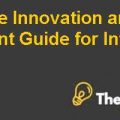Management of Atrial Fibrillation
In spite of the good advancement in managing patient with atrial fibrillation, the major cause of heart failure, stroke, cardiovascular morbidity and sudden death is arrhythmia, all around the world. The assessment of Nandra with AF consists a careful physical and historical examination with the attention to complications which are associated with AF and co-morbidities. The AF clinical presentation can be classified based on the temporal pattern of arrhythmia. In addition, the number of patients with AF disease would most likely rise steeply in the forthcoming years.In order to meet the growing demand for the effective patient care with AF, new information will be published and generated on continuous basis.
The cornerstones of AF management are anticoagulation, rate control and rhythm control for those who have been symptomatically limited by Atrial Fibrillation. The clinical decision to use rate-control and rhythm control strategy critically requires integrated consideration of degree of symptoms, presence of comorbidities, likelihood of successful cardioversion and candidacy of AF ablation. The exercise tolerance and cardiac hemodynamics can be improved by sinus rhythm restoration with the regularization of the rhythm of heart. By maintaining the atrial contribution to the cardiac output, the overall life quality and heart failure symptoms can be improved.
Non-pharmacological strategies:The proarrhythmic risks of anantiarrhythmic drugs and limited efficacy have been leading to the wide spectrum exploration of alternative non-pharmacological strategies to treat atrial fibrillation. The combination of the therapies are required for the purpose of treating the selected patient, this approach is called “Hybrid” approach (Lip, 2006 ).
The reason to selectnon-pharmacologicaltherapiesmight be paroxysmal atrial fibrillation with severe symptoms and frequent attacks. Without adequate rate control, chronic AF leaves the patient who has been experiencing intolerable side effects of effective drug therapy and it also increase the risk to develop tachycardiomyopathy. Following are some non-pharmacological therapies:
| Surgery | Corridor procedure |
| Maze surgery | |
| Radiofrequency ablation | Creating complete AV block with implantation of pacemaker. |
| Modification of AV conduction (incomplete block) | |
| Biatrial catheter-based compartmentalization | |
| Focal ablation of pulmonary veins | |
| Pacemaker | Atrial or dual chamber pacing |
| Biatrial or multisite right atrial pacing | |
| Atrial defibrillator |
Pharmacological therapies: Patients with AF are recommended Antiarrhythmic therapy; it may perform the conversion of AF into sinus rhythm,after cardioversion it may prevent the recurrence and it may also achieve the rate control in patients with permanent AF (Petersen P) Furthermore, antithrombotic therapy and anticoagulation are also indicated in order to prevent the thromboembolic complications in patients (Warfarin versus aspirin for prevention of thromboembolism in atrial fibrillation). There is a well-documented effect of kinidine concerning both prophylaxis & cardioversion, but the use is limited due to the side effectsi.e. proarrhythmia &diarrhea. It is being shown by classical meta-analysis that the proportion of the placebo treated patients is 25% who have been in sinus rhythm 1 year after electro-conversion of AF, the fraction has been increased by kinidine to 50% (Coplen SE).
Amongst those patient with permanent AF, the ultimate therapeutic objectives tends to be rationalized to the rate control. Verapamil, Digoxin, diltiazem and doctors frequently prescribed b-blockers. Additionally, doctor might combine Digoxin with one or other.
Case Study Part 2
Since pharmacist possess a complex and unique body of skills and knowledge and also the competencies identified in the proposed framework aims to illustrate the competencies in generic terms that are significantly central to pharmacist effectively performing in professional practice.
The pharmacist should observe and promote ethical standards, act with professional respect, integrity, responsibility and empathy. Pharmacist should have professionalism in patient-centered care, privacy of information and professional patient relationship. Pharmacist should collaborate with pharmacy and other professionals, communicate effectively with pharmacist team, patient, public and other professionals. Pharmacist should be competent in fostering initiative, collaboratively work for common purpose, influence encourage and facilitate change. Pharmacist should lead with care, inspire shared purpose and evaluate information.
These competencies are essentially required to manage Nandra with several disease and to deliver comprehensive medication management (CMM), by doing so, the adherence of Nandra would improve by effective patient counseling. The effective communication and collaboration would address the wide range of issues that might affect the effective and safe use of medication. It would also support patient in making better treatment choice, thereby improving health outcomes. Pharmacist should educate Nandra regarding the interventions that needs no treatment such as changes in nutrition, lifestyle and her environment. By encouraging her to protect herself from excessively consumption ofalcohol, wouldem power her in taking more protective approach to her health care(National Competency Standards Framework for Pharmacists in Australia , 2016).
The abilities should be self-assessed by the pharmacists, they should be dynamic and committed to fulfill the health care necessities of the patients......
This is just a sample partical work. Please place the order on the website to get your own originally done case solution.










